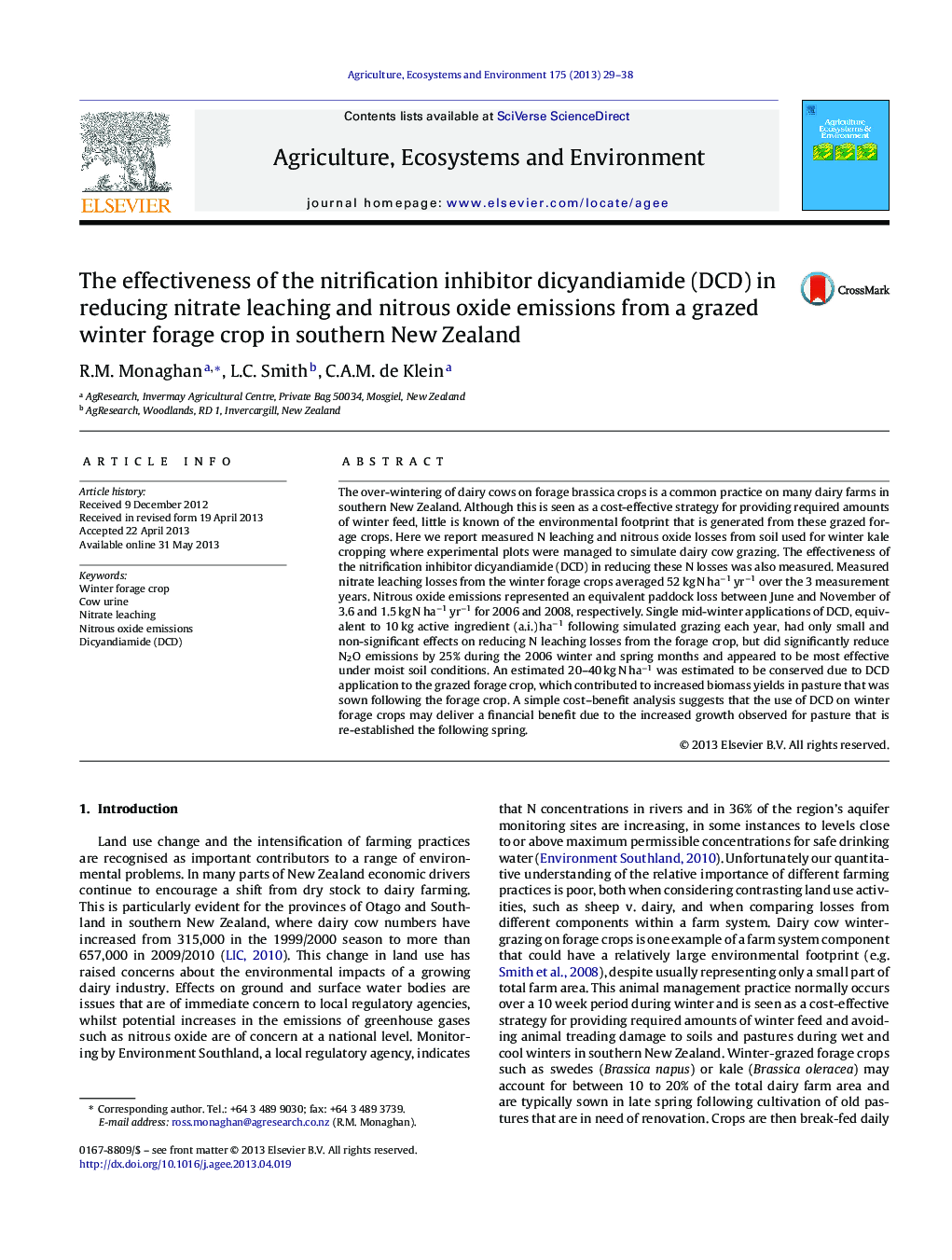| Article ID | Journal | Published Year | Pages | File Type |
|---|---|---|---|---|
| 8488118 | Agriculture, Ecosystems & Environment | 2013 | 10 Pages |
Abstract
The over-wintering of dairy cows on forage brassica crops is a common practice on many dairy farms in southern New Zealand. Although this is seen as a cost-effective strategy for providing required amounts of winter feed, little is known of the environmental footprint that is generated from these grazed forage crops. Here we report measured N leaching and nitrous oxide losses from soil used for winter kale cropping where experimental plots were managed to simulate dairy cow grazing. The effectiveness of the nitrification inhibitor dicyandiamide (DCD) in reducing these N losses was also measured. Measured nitrate leaching losses from the winter forage crops averaged 52 kg N haâ1 yrâ1 over the 3 measurement years. Nitrous oxide emissions represented an equivalent paddock loss between June and November of 3.6 and 1.5 kg N haâ1 yrâ1 for 2006 and 2008, respectively. Single mid-winter applications of DCD, equivalent to 10 kg active ingredient (a.i.) haâ1 following simulated grazing each year, had only small and non-significant effects on reducing N leaching losses from the forage crop, but did significantly reduce N2O emissions by 25% during the 2006 winter and spring months and appeared to be most effective under moist soil conditions. An estimated 20-40 kg N haâ1 was estimated to be conserved due to DCD application to the grazed forage crop, which contributed to increased biomass yields in pasture that was sown following the forage crop. A simple cost-benefit analysis suggests that the use of DCD on winter forage crops may deliver a financial benefit due to the increased growth observed for pasture that is re-established the following spring.
Related Topics
Life Sciences
Agricultural and Biological Sciences
Agronomy and Crop Science
Authors
R.M. Monaghan, L.C. Smith, C.A.M. de Klein,
